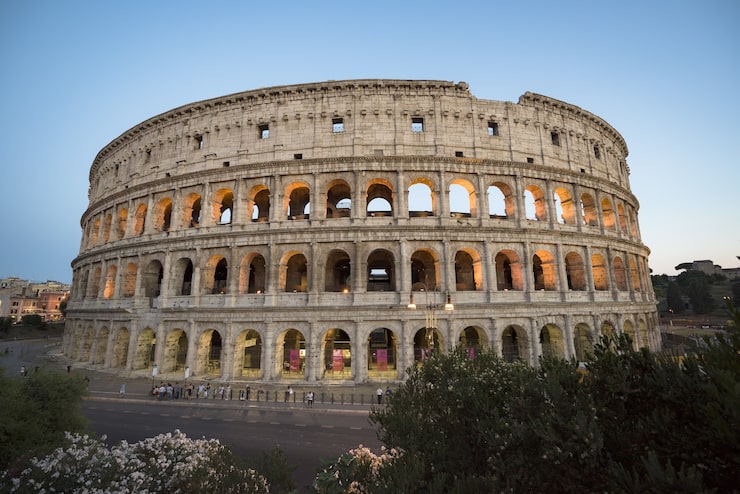Historical Architecture in Rome is more than just stone and mortar—it is a living testimony of power, faith, art, and innovation that has stood for centuries. Walking through the streets of Rome feels like stepping into an open-air museum where every corner tells a story of emperors, gladiators, and architects who left behind structures that still inspire the world today.
When visitors first lay eyes on the Colosseum or St. Peter’s Basilica, they often describe the experience as overwhelming. It is not just about size or grandeur but the emotions these structures evoke. Historical Architecture carries with it the ability to transport us back in time, reminding us of civilizations that shaped the course of human history.
Historical Architecture and the Roman Empire’s Vision
At the height of its empire, Rome was a city built to display strength and authority. Structures like the Colosseum symbolized not only entertainment but also the reach of imperial influence. The amphitheater could hold up to 50,000 spectators, showcasing the architectural mastery of ancient engineers.
Historian Amanda Claridge notes that Roman builders perfected techniques like the use of arches and concrete, which allowed them to create structures of immense scale. These innovations became the foundation for much of Europe’s architectural development in later centuries.
The Enduring Beauty of the Colosseum
One cannot talk about Historical Architecture in Rome without mentioning the Colosseum. Built under Emperor Vespasian and completed by Titus in 80 AD, it remains one of the most iconic monuments in the world.
Though partially damaged by earthquakes and time, its structure still commands awe. Visitors often recall how standing inside feels like hearing echoes of gladiators and cheering crowds. Architectural writer Mary Beard highlights that the Colosseum is as much a political symbol as an entertainment venue, reflecting the might of the Roman state.
Its system of underground passages and lifts shows a sophistication that makes modern architects admire Roman ingenuity even today.
Roman Forums: The Heart of Civic Life
While the Colosseum showcased grandeur, the Roman Forum served as the beating heart of political, social, and commercial life. This space was lined with temples, arches, and basilicas that reflected Rome’s role as a center of governance and religion.
Archaeologist Filippo Coarelli has explained that these forums were more than administrative centers—they represented the spirit of civic life, where citizens gathered to debate, celebrate, and worship. Walking through the ruins today still offers glimpses of Rome’s dynamic past.
Historical Architecture in Sacred Spaces
Rome is not only known for imperial monuments but also for its religious structures, many of which blend ancient Roman and Christian traditions. St. Peter’s Basilica in Vatican City is a striking example. Designed by artists like Michelangelo and Bernini, it stands as a masterpiece of Renaissance architecture with its massive dome and intricate interiors.
Pilgrims from across the globe describe the moment of entering St. Peter’s as spiritual and breathtaking. Art historian Giorgio Vasari once praised Michelangelo’s dome as a marvel that seemed to “lift the soul toward heaven.”
Similarly, the Pantheon, with its massive concrete dome and central oculus, remains one of the best-preserved monuments of Roman engineering. Originally built as a temple for all gods, it later became a Christian church, symbolizing Rome’s transformation across centuries.
Bridges and Aqueducts: Everyday Marvels of Historical Architecture
While temples and arenas receive most attention, the functional brilliance of Roman aqueducts and bridges cannot be ignored. These were not just public works but masterpieces of Historical Architecture.
The Pont du Gard in France, built by Roman engineers, is one of the finest surviving aqueducts and demonstrates how Rome extended its architectural influence beyond Italy. Closer to home, the Aqua Claudia in Rome still stands as proof of Rome’s ability to bring water across long distances with precision.
Architectural researcher Frank Sear once emphasized that these works highlight the Roman genius for combining utility with beauty, something many modern engineers continue to admire.
Influence of Historical Architecture on Renaissance Rome
As centuries passed, the ruins of ancient Rome inspired Renaissance architects to revive classical styles. The balance, symmetry, and grandeur of Roman buildings influenced creations like the Palazzo Farnese and the Campidoglio, designed by Michelangelo.
In many ways, Historical Architecture became the blueprint for cultural rebirth. It was not about copying the past but reinterpreting it for a new era. This shows how timeless Rome’s legacy is, shaping not only its own cityscape but global architecture.
A Walk Through Eternal Rome
Visitors often share that exploring Rome feels like time travel. From the moment you step into the Piazza Venezia and gaze at the Victor Emmanuel II Monument, to strolling past the ruins of the Forum, the continuity of history becomes tangible.
Even narrow alleys, lined with medieval structures built over Roman foundations, carry the whisper of the past. Guides often tell stories of emperors, popes, and artists who left their imprint on these stones.
One traveler recalled standing on Palatine Hill, overlooking the ruins of the Forum, and feeling as though the past and present merged in a single breathtaking view. Such is the emotional impact of Historical Architecture in Rome.
Preservation of Historical Architecture in Modern Times
Today, Rome faces the challenge of preserving its monuments while balancing modern urban life. With millions of tourists visiting annually, sites like the Colosseum and Pantheon require constant care.
Italian conservationist Rossella Rea has noted that preservation efforts must combine traditional craftsmanship with modern technology to protect these treasures. The work is ongoing, ensuring that future generations can also walk the same streets and marvel at the same monuments.
Rome’s commitment to preserving Historical Architecture reminds the world that heritage is not just about the past—it’s a gift to the future.
Read also:
argentina national football team vs bolivia national football team standings
mexico vs honduras time
argentina national football team vs bolivia national football team lineups
spain national football team vs england national football team lineups

